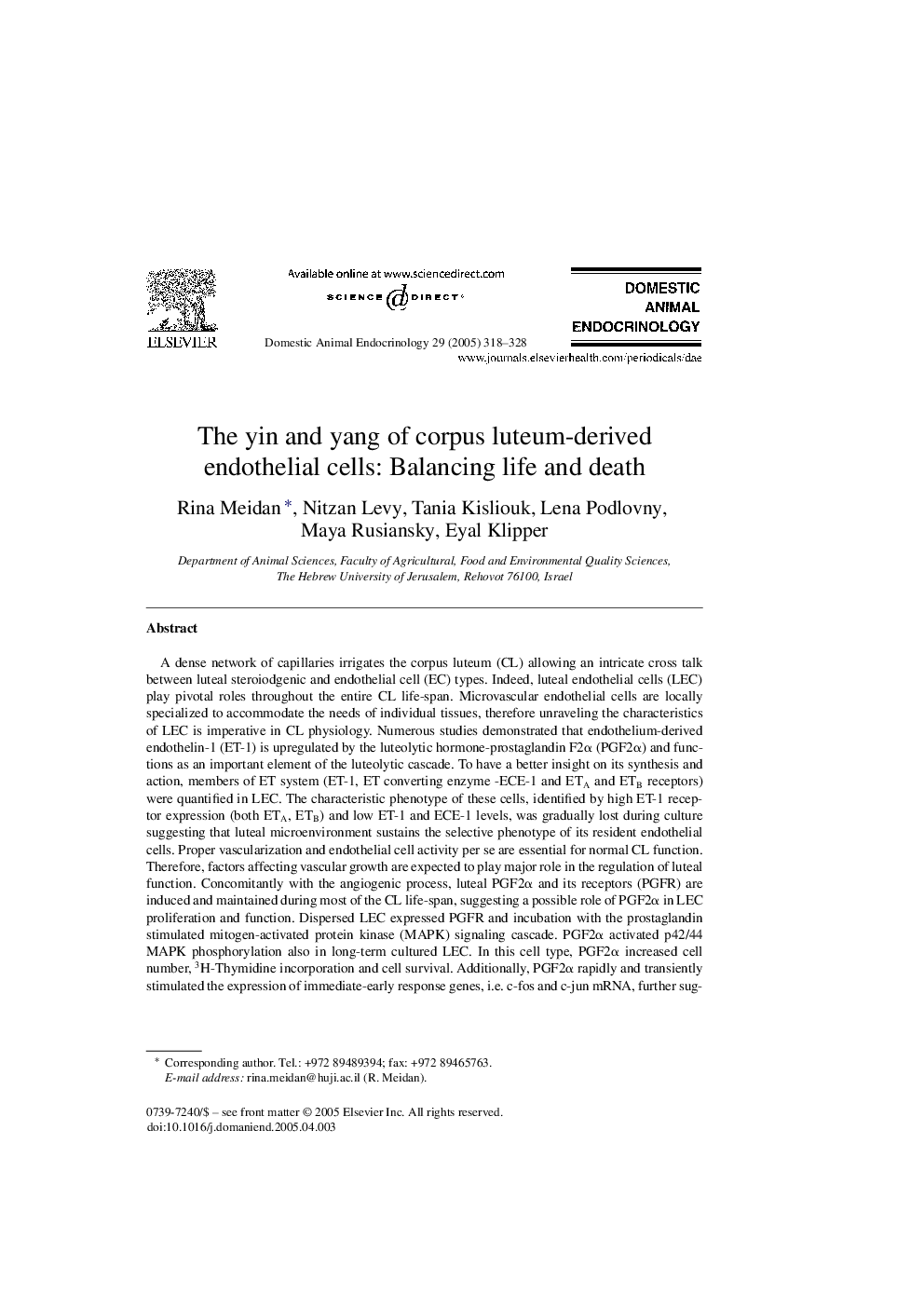| Article ID | Journal | Published Year | Pages | File Type |
|---|---|---|---|---|
| 8967171 | Domestic Animal Endocrinology | 2005 | 11 Pages |
Abstract
A dense network of capillaries irrigates the corpus luteum (CL) allowing an intricate cross talk between luteal steroiodgenic and endothelial cell (EC) types. Indeed, luteal endothelial cells (LEC) play pivotal roles throughout the entire CL life-span. Microvascular endothelial cells are locally specialized to accommodate the needs of individual tissues, therefore unraveling the characteristics of LEC is imperative in CL physiology. Numerous studies demonstrated that endothelium-derived endothelin-1 (ET-1) is upregulated by the luteolytic hormone-prostaglandin F2α (PGF2α) and functions as an important element of the luteolytic cascade. To have a better insight on its synthesis and action, members of ET system (ET-1, ET converting enzyme -ECE-1 and ETA and ETB receptors) were quantified in LEC. The characteristic phenotype of these cells, identified by high ET-1 receptor expression (both ETA, ETB) and low ET-1 and ECE-1 levels, was gradually lost during culture suggesting that luteal microenvironment sustains the selective phenotype of its resident endothelial cells. Proper vascularization and endothelial cell activity per se are essential for normal CL function. Therefore, factors affecting vascular growth are expected to play major role in the regulation of luteal function. Concomitantly with the angiogenic process, luteal PGF2α and its receptors (PGFR) are induced and maintained during most of the CL life-span, suggesting a possible role of PGF2α in LEC proliferation and function. Dispersed LEC expressed PGFR and incubation with the prostaglandin stimulated mitogen-activated protein kinase (MAPK) signaling cascade. PGF2α activated p42/44 MAPK phosphorylation also in long-term cultured LEC. In this cell type, PGF2α increased cell number, 3H-Thymidine incorporation and cell survival. Additionally, PGF2α rapidly and transiently stimulated the expression of immediate-early response genes, i.e. c-fos and c-jun mRNA, further suggesting a mitogenic effect for this prostaglandin in LEC. These data imply that PGF2α may assume different and perhaps opposing roles depending on luteal microenvironment.
Related Topics
Life Sciences
Agricultural and Biological Sciences
Animal Science and Zoology
Authors
Rina Meidan, Nitzan Levy, Tania Kisliouk, Lena Podlovny, Maya Rusiansky, Eyal Klipper,
